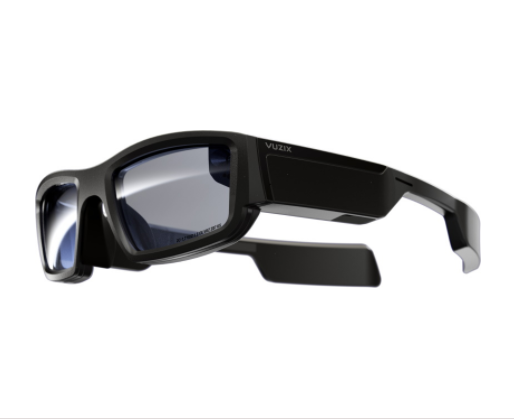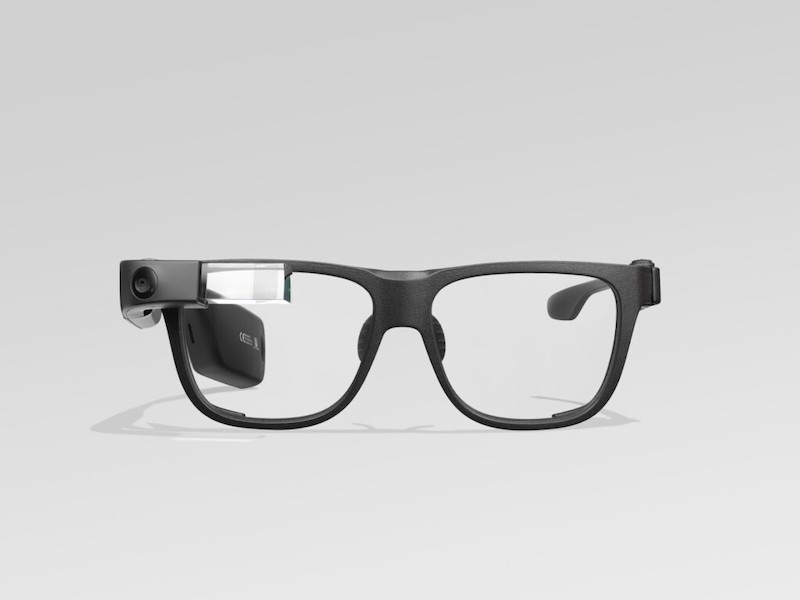Augmented Reality (AR) in Natural & Cultural History Education
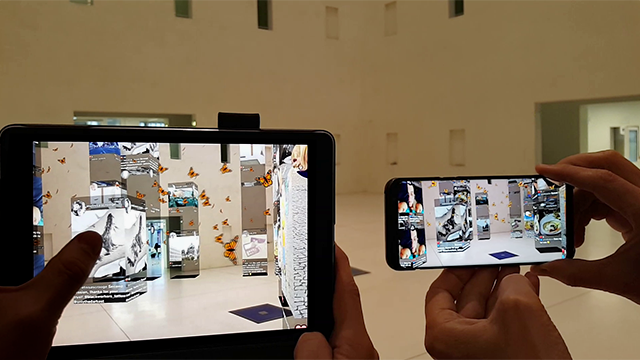
An Introduction to Augmented Reality
Augmented reality (AR), as the name suggests, is an interactive experience where our real, physical world is digitally augmented. The augmentation is usually visual in current applications, though it can also be through other senses, such as auditory or haptic. There are three basic features of AR:
a combination of real and virtual worlds, real-time interaction, and accurate 3D registration of virtual and real objects.
Wu et al., 2013.
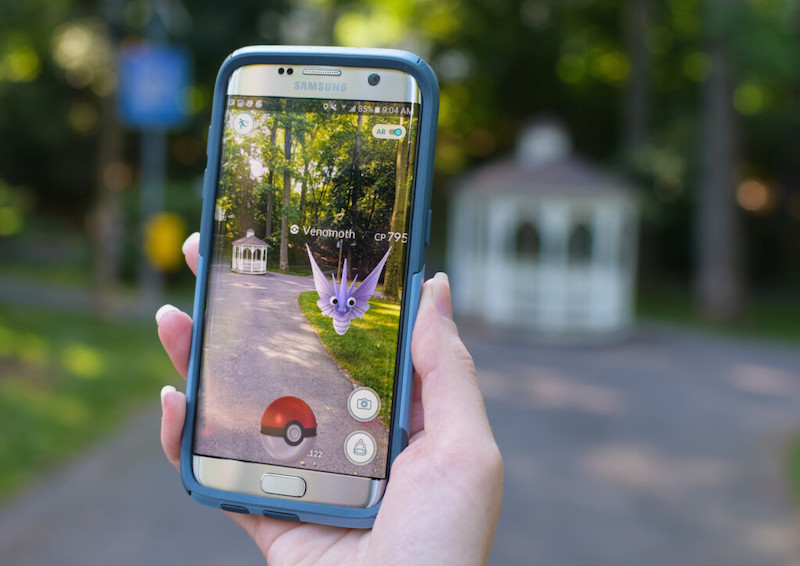
AR seems very much like futuristic technology, but it is already all around us. The hit mobile game of summer 2016, Pokémon GO, is perhaps a familiar example to many, where wild Pokémons are superimposed onto real-world landscapes through the phone’s camera.
Another example that many interact with on a daily basis is the lenses and filters on apps such as Snapchat and Instagram.
Examples in Natural and Cultural History Education
As the previous examples illustrated, immersive experiences are often used for entertainment purposes; their interactive and novel nature lends itself well for audiences who crave the fun and excitement that comes with AR technology. Many parties are leveraging the allure of this new technology to make education more appealing to the general masses. The following examples are where AR is used in the realm of natural and cultural history education:
1) ReBlink @ AGO

ReBlink was a project by the Impossible Things team, exhibited at the Art Gallery of Ontario (AGO) in 2017-2018. It used AR to give classic paintings exhibited in the AGO a modern twist, hence offering a new perspective and a link between past and present.
2) Google Arts & Culture

You may remember a brief trend a few years back when people were matching their faces with famous portraits. That was the Google Arts & Culture app. It has since gotten a lot more features, and a good portion of them are AR-based (it also contains a lot of 3D photos and videos). You can have a life-size dinosaur in your bedroom, hang famous paintings on your wall, or walk through historical and archaeological sites, all through the lens of your phone camera. It is available for download on iOS and Android.
3) AR Tours in Pompeii

AR Tour is one of several companies that offer AR tours of the ancient Roman city of Pompeii. Tourists wear AR glasses that allow them to see the former glory of the ancient city, destroyed by a violent eruption of the volcano Mount Vesuvius in 79AD, superimposed on today’s ruins. This is a fine example where there is potential profit in applying AR technology to Natural and Cultural History Education.
4) East of the Rockies

East of the Rockies is an app that was developed by the National Film Board of Canada in conjunction with Japanese-Canadian author Joy Kogawa. It is an AR-based narrative experience that vividly illustrates the experiences of Japanese internment in Canada during WWII. The app is available on iOS for CA$5.49.
Total Cost and Requirements of Ownership in 2020
Out of the many immersive experiences available, AR is probably the most affordable. Since it is not required to render a fully virtual environment like VR and there are less sophisticated interactions between real and virtual objects than MR, AR theoretically requires the least amount of processing power.
For those reasons, most modern smartphones now support AR experiences, as illustrated by some of the examples above. Since most people (including teachers and students) own their own smartphones, the additional hardware cost is usually minimal.
There are dedicated AR glasses, the most famous being Google’s Glass. However, it is not currently sold commercially. The most prominent, feature-complete, commercially-available AR smart glasses are the Vuzix Blade, which retails for US$899.99. This is not a cheap device, especially compared to standalone VR devices, which is a result of AR being not nearly as mainstream as VR currently is.

Vuzix Blade 
Product photography of the Google Glass wearable.
Many educational AR mobile apps are available for free; at this early stage, there is not enough critical mass to generate much profit from sales. As a result, many of these apps are not very extensive (with a few exceptions, like the aforementioned Google Arts and Culture).
Limitations
- 1. Technical limitations: Many studies point to one of the major limitations of AR being its unreliability and issues with usability (Fotaris et al., 2017; Van Krevelen & Poelman, 2010; Tzima et al., 2019). Even after decades of technological improvements, AR functionality is still not perfect in terms of tracking and display. This can be caused by many factors such as inadequate processing, inadequate camera depth-sensing, network issues, etc. The studies cited above remark notable frustration among students and teachers while using AR as a teaching and learning tool due to these technical limitations.
- 2. Lack of Software Applications: While AR development is proceeding at a rapid pace, there are simply not many pieces of AR software available, especially for educational purposes. This is due to the complexity in AR software development, as well as competition for talent from the entertainment sector (Tzima et al., 2019).
- 3. Lack of Pedagogical Training: Being a nascent technology, most teachers were not trained to use or teach with AR. Multiple studies suggest that teachers need to develop additional teaching and learning material, as well as pedagogical strategies, in order to fully unlock the potential of AR (Dunleavy et al., 2009; Fotaris et al., 2017; Tzima et al., 2019).
Future Potential and Opportunities
Certain institutions with adequate budgets, such as many museums around the world, are starting to develop their own AR apps for educational purposes. Museums, of course, have revenue streams that allow them to fund such developments, so they are in a good position to bring AR to the attention of more consumers and important stakeholders.
However, for AR to have a place in education, it also has to have a place in other aspects of life. We can somewhat predict where AR can and will go based on where VR has gone. VR first entered the mainstream consciousness in the realm of gaming and entertainment, and it is trickling its way down to education, more so than AR. Currently, AR still does not have a major place in the public consciousness (not as much as VR, anyhow), but the potential applications of AR are many due to its inherent function in augmenting what we already see and do.
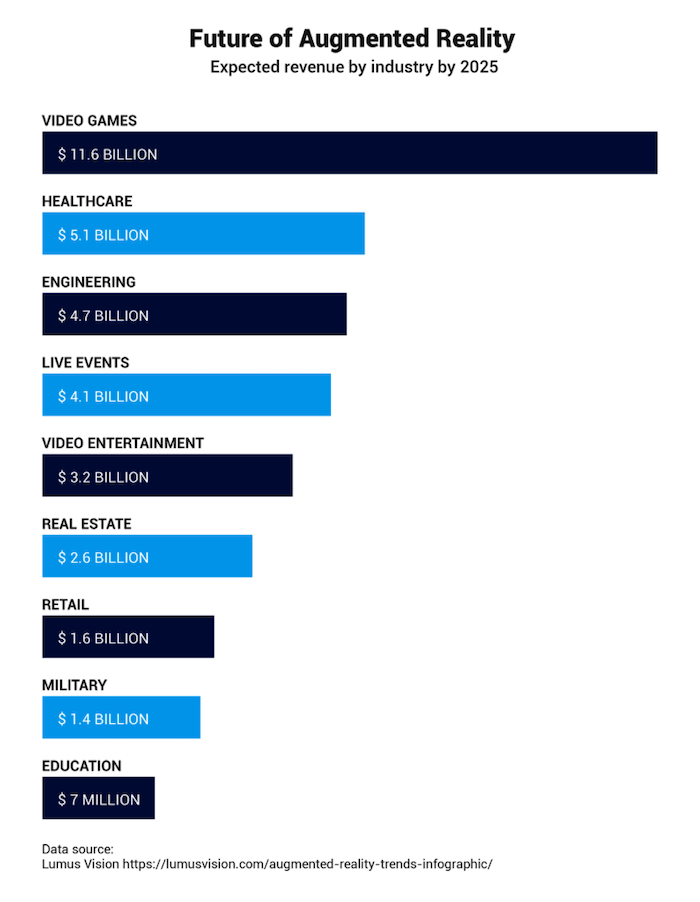
Navigation and advertising are two major future opportunities (especially the latter) that can easily propel AR onto the main stage of consumerism. Healthcare and engineering will push AR into the academic and institutional markets. In the short term, however, the novelty and interactivity of AR would become prime commodities for the entertainment sector, with gaming leading the way, as seen in the above graph.

